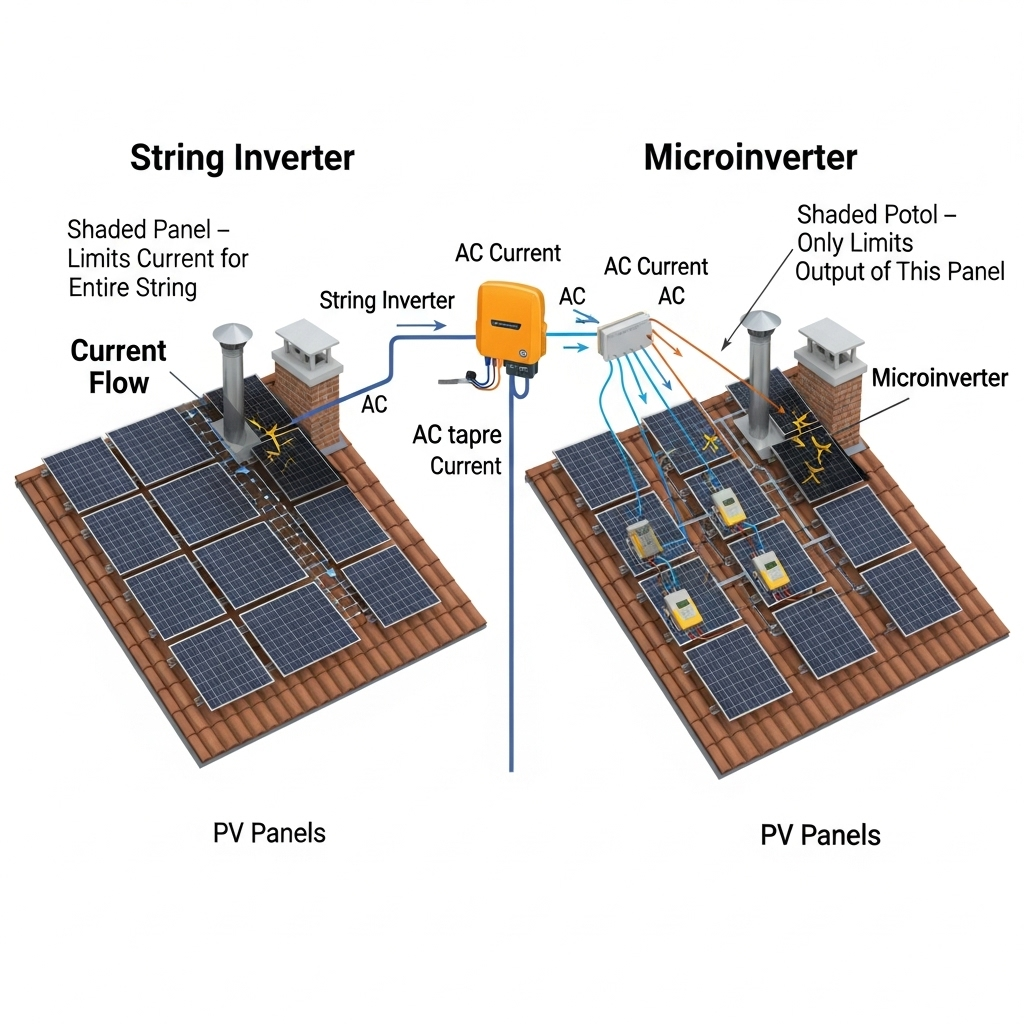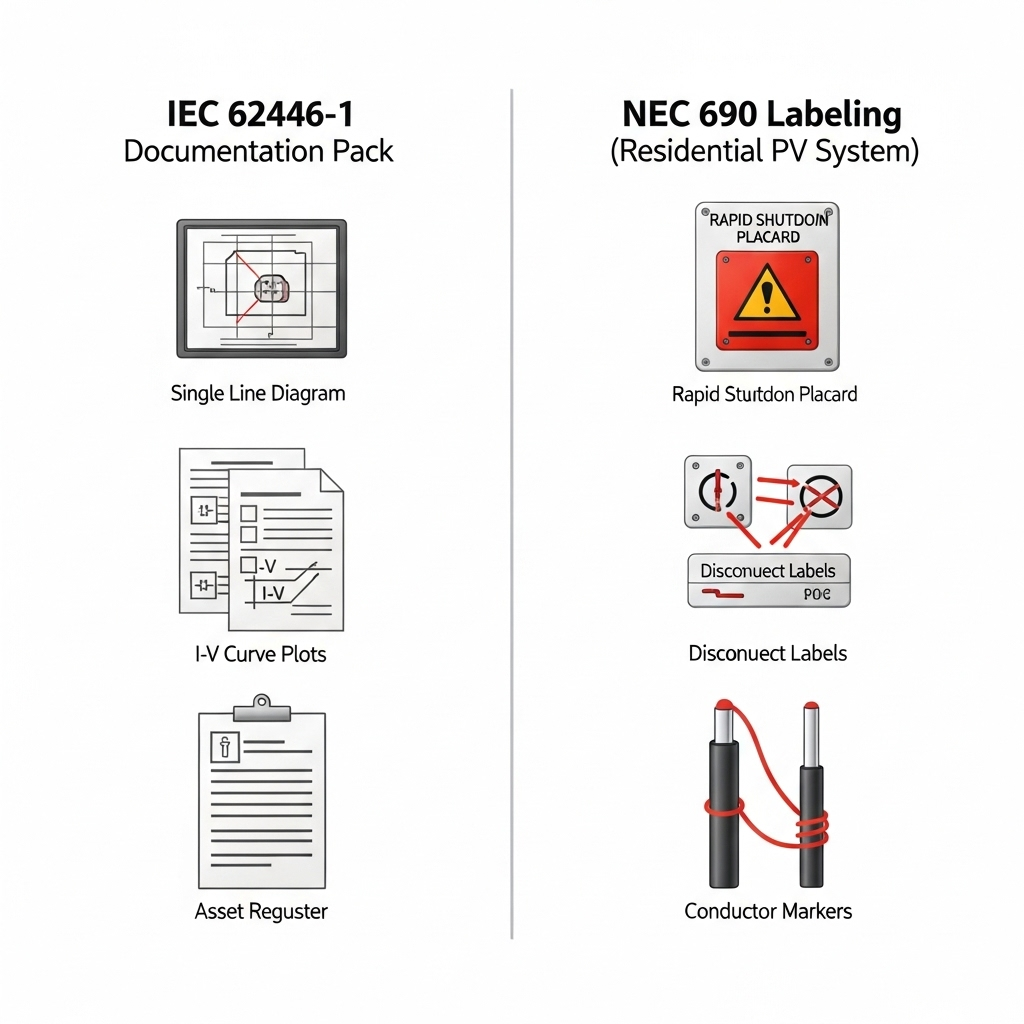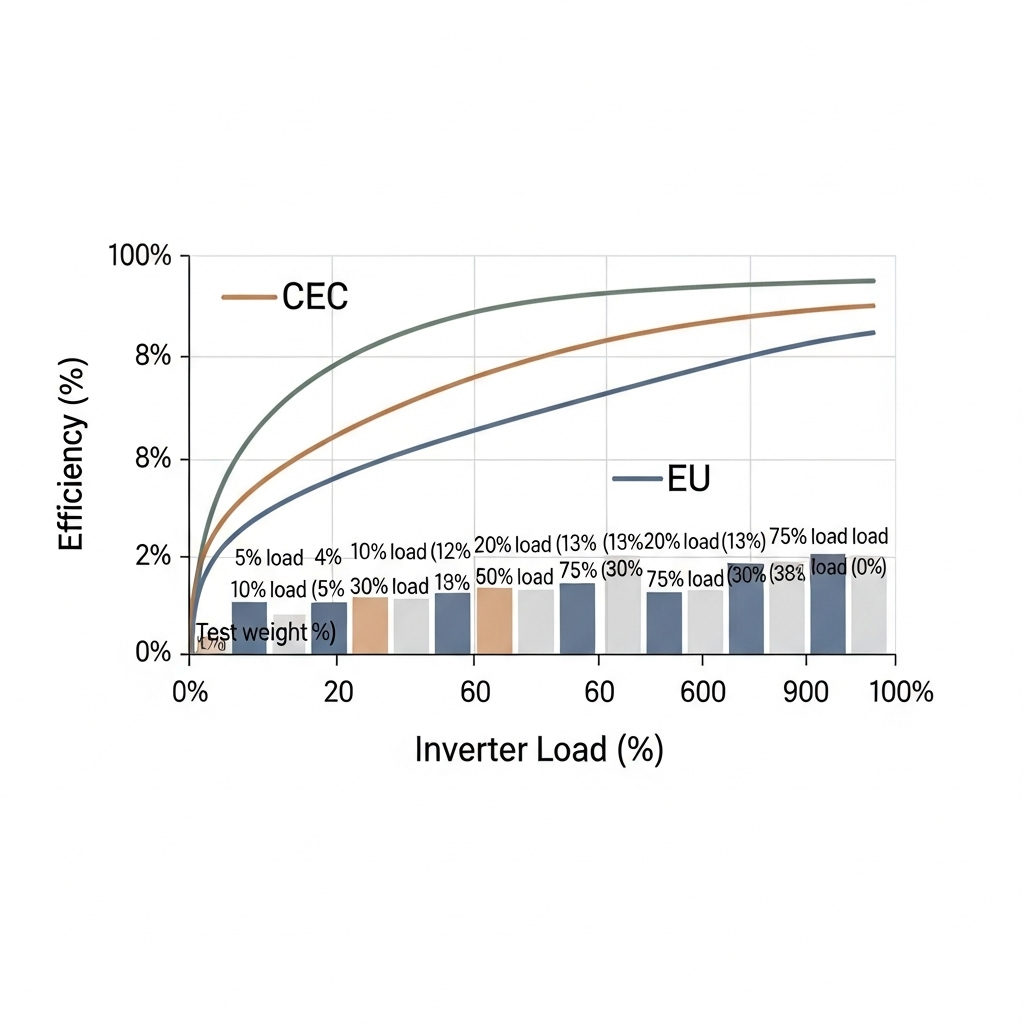Mismatch losses shrink yield even in clean, sunny sites. Shade from a vent, uneven soiling, or mixed module ages force a series string to run at the current of its weakest panel. Microinverters and other module-level power electronics run each panel at its own optimum. This piece shows how the two architectures behave under mismatch, how to size around the risk, and where storage and controls raise net gains.

Why mismatch hurts solar panel performance
In a series string, current equalizes across modules. A single shaded or underperforming module drags the whole string. Bypass diodes help in deep shade on one substring, yet part-load shade and non-uniform irradiance still pull down output. In contrast, microinverters isolate each module, so the rest keep running at their own maximum power points.
Performance ratio (PR) captures the gap between plane-of-array resource and AC output. Typical systems reach 80%–90% PR in steady operation, with losses from temperature, mismatch, dirt, wiring, and conversion stages. This range is reported in the IEA roadmap (Technology Roadmap - Solar PV 2010), and it remains a useful benchmark for design checks.
Recent module efficiency gains narrow some losses on area-constrained roofs. High-efficiency PERC, HJT, and TOPCon cells push real operating efficiencies higher, as tracked by the IEA (Solar PV Global Supply Chains). Yet mismatch from shade or diverse module conditions still creates avoidable losses unless the electrical architecture manages it.
How each inverter type behaves at mismatch
String inverter behavior
- Series current is set by the lowest-current module in that string.
- Multi-MPPT string inverters can separate roof planes into different inputs. Keep strings that share one MPPT uniform in tilt, azimuth, and module type.
- Bypass diodes limit severe shade loss but can clip part of the IV curve, lowering harvested energy at partial shade.
Microinverter behavior
- Each module has its own MPPT and AC stage. A shaded module reduces only its own output.
- Module-level data supports targeted cleaning and fault fixes, cutting availability loss from elusive issues.
- Rapid shutdown and arc-fault isolation can be simpler at module level, improving safety and uptime.
Quantifying mismatch losses
Ranges vary by site and season. Field studies and vendor-neutral trials report that module-level optimization cuts mismatch losses notably in partial shade and mixed-orientation arrays. The U.S. Department of Energy shares case evidence where parallelized module control lifts output and reduces copper use, with retrofit gains of about 5%–15% at aging sites (Energy.gov: converter and wiring setup; Energy.gov: power optimization research).
| Scenario | Electrical effect | Annual loss, String inverter | Annual loss, Microinverter / MLPE | Notes |
|---|---|---|---|---|
| Partial shade 5% of array for 2–3 peak hours | String current capped by shaded module | 3%–8% | 1%–3% | Bypass diodes reduce deep shade events, not light non-uniformity |
| Mixed orientations on one MPPT | IV mismatch between roof planes | 4%–10% | 1%–4% | Use separate MPPTs or MLPE to cut loss |
| Uneven soiling or snow shedding | Random current spread across modules | 2%–6% | 1%–3% | Cleaning guided by module-level data |
| Module aging spread 1%/yr vs 0.5%/yr | Current mismatch grows with time | 1%–3% after 5 years | ~1% | Spread depends on binning and site conditions |
These ranges align with the way mismatch contributes to PR. As IEA notes, PR reflects mismatch, temperature, and conversion loss stacks (IEA roadmap). Improving layout and electronics selection can keep PR near the top of the 80%–90% band.
Sizing inverters for mismatch
String inverters: practical steps
- Group similar modules per MPPT. Keep azimuth and tilt matched per input. Avoid mixing module wattages on the same MPPT.
- Follow string current limits and consider a mismatch factor in yield models. Many designers use 2%–5% extra loss in clean, uniform arrays, higher for trees and obstructions.
- Check cold Voc and warm Vmp windows for each string. Respect inverter MPPT voltage range with margin.
- Use layout to prevent shade on the same substring across panels. Rotate junction box orientation or module placement where feasible.
Microinverters: practical steps
- Match module Vmp to the microinverter MPPT voltage window. Ensure cold and hot extremes stay inside limits stated in datasheets.
- Use a DC-to-AC ratio near 1.1–1.3 for rooftops. This balances mild clipping at noon with higher morning and afternoon harvest.
- Plan branch circuits for trunk capacity and voltage rise. Keep AC voltage rise under local code thresholds to maintain inverter efficiency.
Storage and mismatch
Mismatch control raises daytime yield. Storage shifts energy to load windows. A reference piece on storage performance reviews round-trip factors, DoD effects, and sizing trade-offs that pair well with rooftop PV (Ultimate reference: solar storage performance). If microinverters are used, storage typically connects on the AC side. With string inverters, DC coupling can charge batteries through a shared DC bus, trimming component count and conversion stages as described by U.S. DOE case material (Energy.gov: power optimization research).
Availability, safety, and reliability
Availability loss grows if a single fault trips a large section. Module-level systems localize faults to one module, so more of the array stays online. Trip logic also matters. False arc-fault or ground-fault trips cut uptime; better components and settings reduce those incidents. Sector analyses highlight that improving inverter quality and eliminating false trips help raise availability (IRENA).
Rapid shutdown and arc-fault detection requirements often favor module-level hardware or string-level transmitters. Both architectures can meet code with the right components. The key is a tested stack: modules, racking, wiring, and power electronics that pass surveillance testing and offer clear diagnostics.
Worked example: 8 kW rooftop under light shade
Setup: 20 modules at 400 W each, two roof planes, light chimney shade on 20% of modules for 2 hours near noon on sunny days. Site receives 1,600 kWh/m² yearly on array plane.
- Baseline PR target: 85%. This sits within the 80%–90% band cited by IEA (IEA roadmap).
- String inverter case: mixed roof planes share one MPPT, occasional partial shade. Model mismatch loss at 6% based on table ranges, plus 2% soiling. Expected AC yield ≈ 8 kW × 1,600 × 0.85 × (1 − 0.06 − 0.02) / 1,000 ≈ 10,105 kWh/yr.
- Microinverter case: each module tracks its own MPP. Use 3% mismatch and 2% soiling. Expected AC yield ≈ 8 kW × 1,600 × 0.85 × (1 − 0.03 − 0.02) / 1,000 ≈ 10,592 kWh/yr.
Gain: roughly 4.8% in this layout. If a small battery absorbs late afternoon peaks and supports evening usage, the storage reference notes that real savings also depend on round-trip efficiency, cycle limits, and time-of-use tariffs (storage performance overview).
Design tips that save yield
- Do a shade survey and map obstructions. Place strings to keep each MPPT uniform. If diversity cannot be avoided, consider MLPE.
- Bifacial or high-albedo sites can raise rear-side gain, but layout choices such as row spacing and height still affect uniformity. A systems view prevents new mismatch issues while chasing extra gain (IEA supply chains report).
- Use clean cable management. Keep connectors dry and strain-free to avoid intermittent faults that mimic mismatch.
- Plan O&M with module-level data or thermal scans. Quick action on underperformers protects PR.
Key takeaways
- Microinverters shine in partial shade, mixed orientations, and complex roofs, cutting mismatch losses and boosting uptime.
- String inverters excel on uniform planes with tidy layout and multi-MPPT inputs, and pair well with DC-coupled storage.
- Measured gains of 5%–15% at retrofit sites show the value of module-level control in many cases, as noted in U.S. DOE success stories (Energy.gov case).
- Keep PR near the top of the 80%–90% range with smart grouping, clean wiring, and the right power electronics stack.
References and further reading
- IEA: Technology Roadmap - Solar PV
- IEA: Solar PV Global Supply Chains
- Energy.gov success story: converter and wiring
- Energy.gov success story: power optimization
- U.S. EIA: energy data portal
- Solar storage performance reference
FAQ
Do microinverters always win on efficiency?
No. On uniform, shade-free planes with well-matched modules and clean wiring, multi-MPPT string inverters can match or exceed annual efficiency at lower upfront cost. Gains from microinverters grow as mismatch risk grows.
How much mismatch loss should I budget in a model?
For tidy arrays with separate MPPTs per roof plane, 2%–4% is common. With trees, chimneys, snow, or mixed orientations on a single MPPT, 5%–10% is a prudent start. Validate with site-specific shade studies.
Does storage change the inverter choice?
Storage shifts energy and adds value through tariffs and backup needs. Microinverters pair with AC-coupled storage. String inverters can support DC-coupled batteries. Review round-trip and control strategies as summarized in the storage performance overview.
Can bifacial modules reduce mismatch risks?
Bifacial gain raises output, yet layout still rules. Row spacing, height, and albedo must be tuned to keep irradiance uniform across modules. Poor geometry can add new mismatch effects.
How do I cut availability loss from nuisance trips?
Use quality components, correct protection settings, and clean wiring. Module-level systems isolate issues to a single module, while better trip logic and fault detection improve uptime across both architectures. See sector guidance from IRENA.
Disclaimer: This content is technical information for planning and education. Local codes, interconnection rules, and warranties vary. Seek qualified engineering review. Not legal advice.





Leave a comment
All comments are moderated before being published.
This site is protected by hCaptcha and the hCaptcha Privacy Policy and Terms of Service apply.